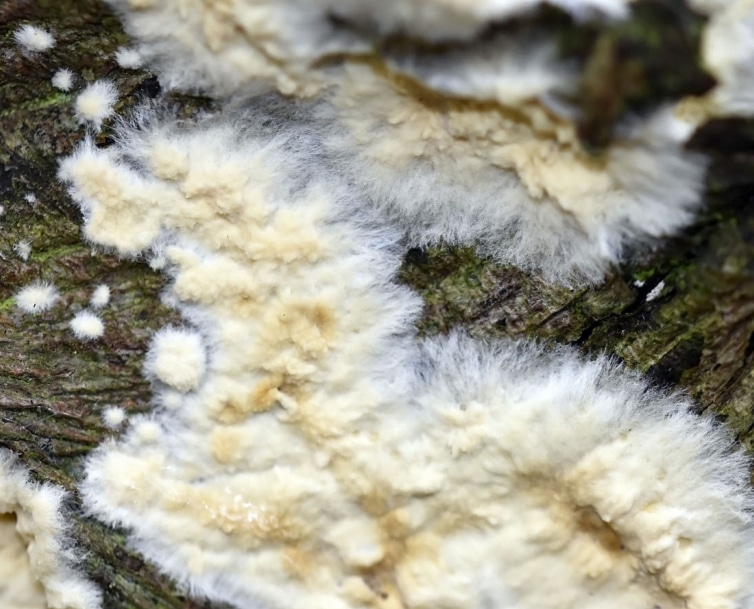Cellar coniophore: let’s combat this fungus!

As well as wood-eating insects, wood also needs to be protected from the proliferation and attack of wood-rotting fungi. Let’s take a look at one of them today: cellar coniophore.
Cellar coniophore: history and form
Cellar coniophore… This is how it is usually called, even if it has other names (coniophora puteana or hummocky coniophore).
This wood-loving fungus joins our columns under the heading “responsible for cubic rot”, like its well-known neighbour, the merula.
As a reminder, cubic rot (or brown rot) manifests itself as strange cubic shapes on wooden elements (frames, floors, etc.). These develop by extracting water from the wood. Cubic rot attacks the cellulose present in the wood, defibrating it and making it brittle, thus reducing its mechanical strength. Hence the danger of this fungus, particularly for structural elements, and the need to treat it.
Cellar coniophore love dampness and dark, confined corners. Its name leaves nothing to chance, have you noticed?
Another important point to know is that this fungus attacks both coniferous and deciduous trees! It develops perfectly well when :
- Temperatures are between 5°C and 35°C (more particularly between 22°C and 26°C),
- The wood is well moist, with a moisture content of 50% to 60%.
In the way it develops, the lignivorous coniophore infiltrates the wood via a network of mycelial filaments (itself composed of hyphae), a characteristic common to fungi of this genus. On the outside of the wood, hyphae appear and mix. The result is a strange ball/agglomeration of yellowish cottony filaments, a curious sight but one that is not misleading.
How to combat Cellar coniophore
It’s true that Cellar coniophore needs much more humidity than the merule to develop. But its impact on wood is no less, and the outcome is in fact the same: cubic rot.
The method of treatment against wood-rotting fungi consists of :
- carry out a preliminary study to identify the nature of the fungus (to determine whether it is a merula or a coniophore),
- remove the source of moisture, which is responsible for the development of the coniophore fungus. This stage is essential to ensure that the treatment is effective and long-lasting,
- remove and dispose of any wood that has deteriorated and lost its mechanical strength,
- treat the wood with a fungicide toprevent the fungus from developing.
So, by tackling the problems of damp and ventilation, then implementing curative measures for materials and a fungal treatment, the cellar coniophore can be eradicated